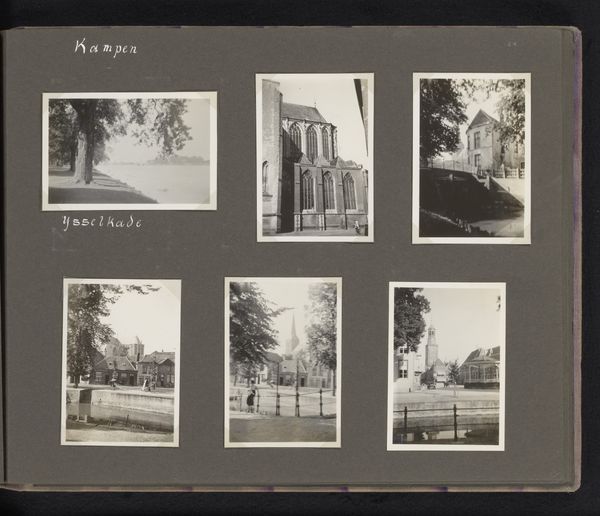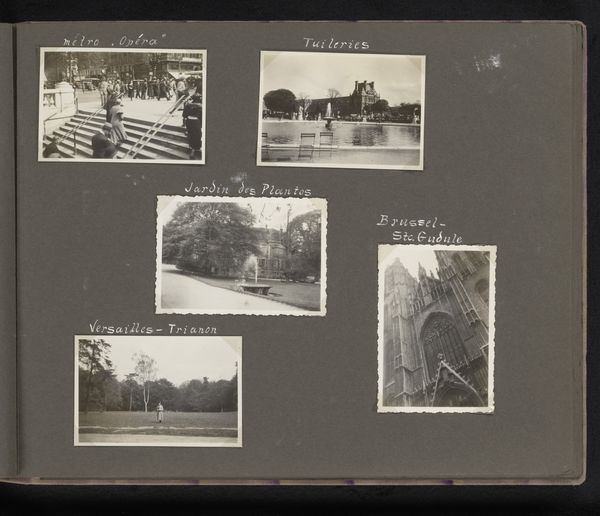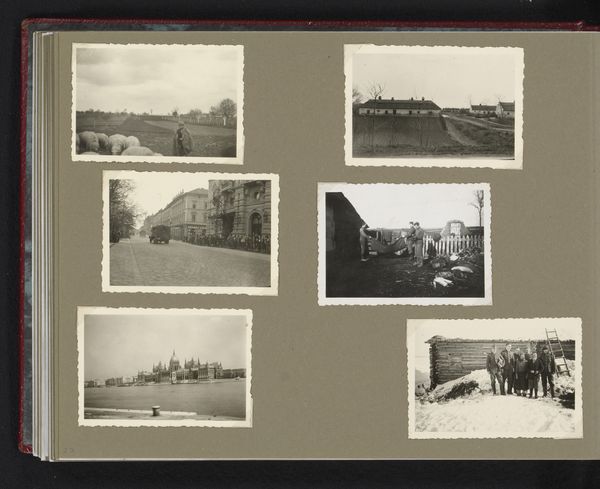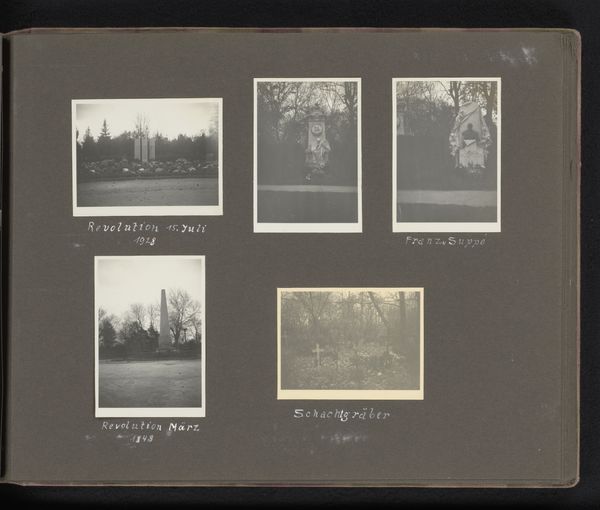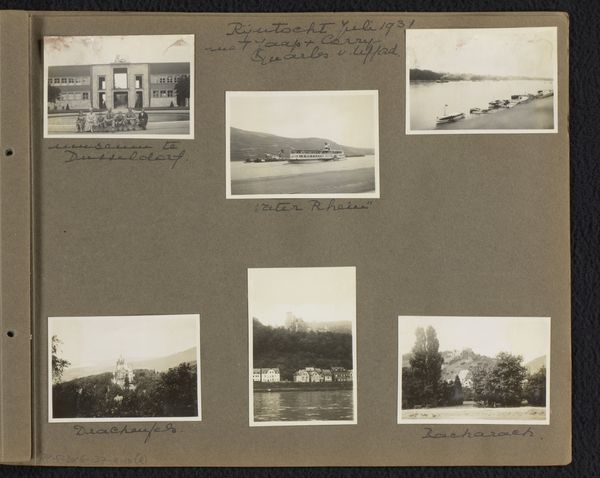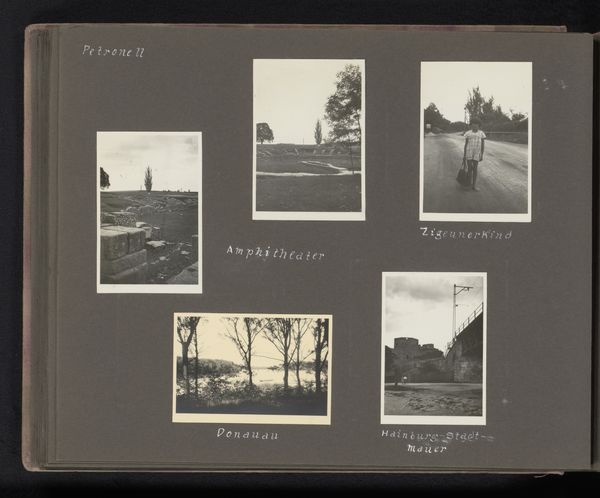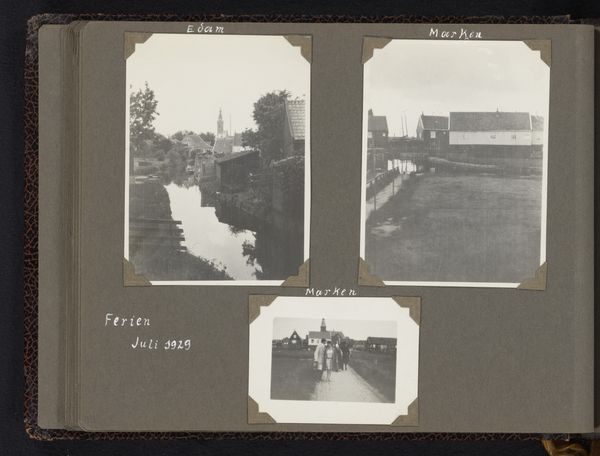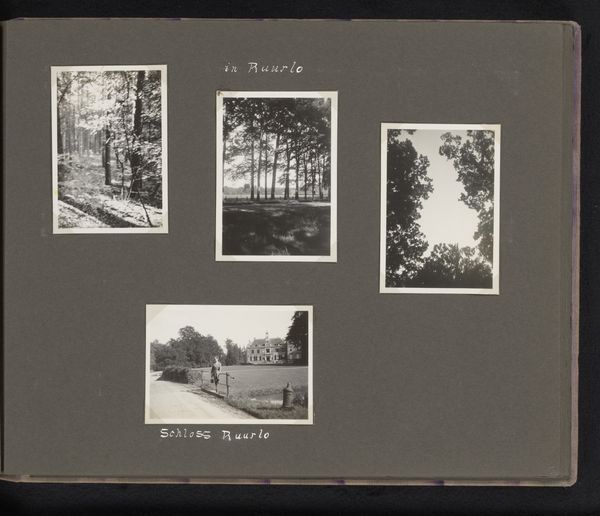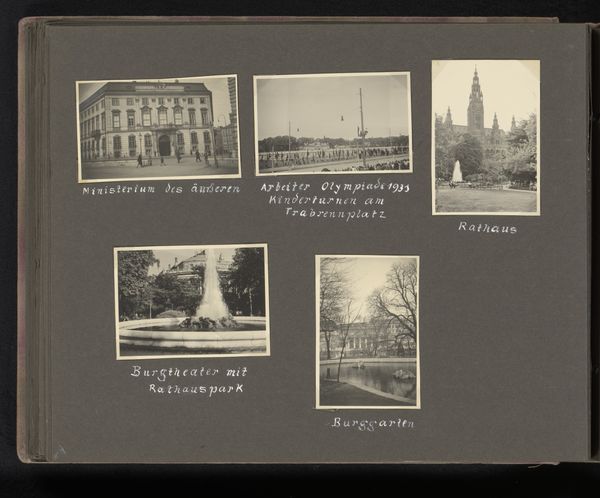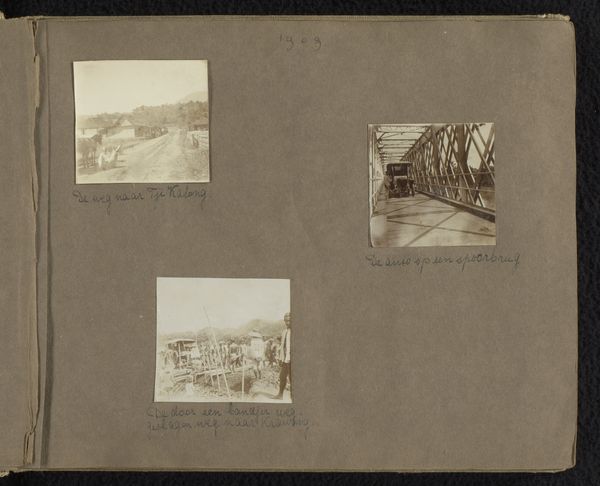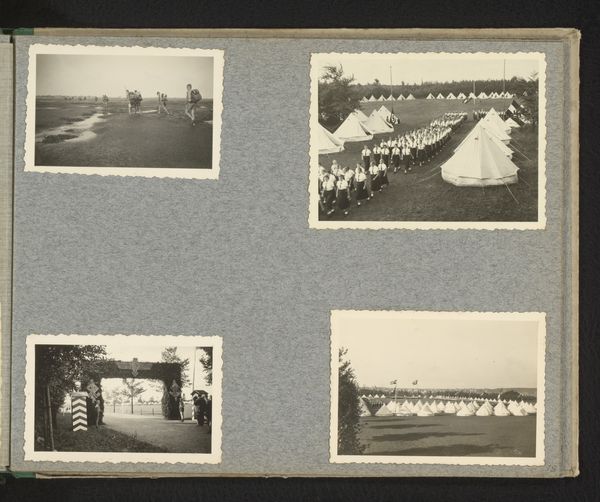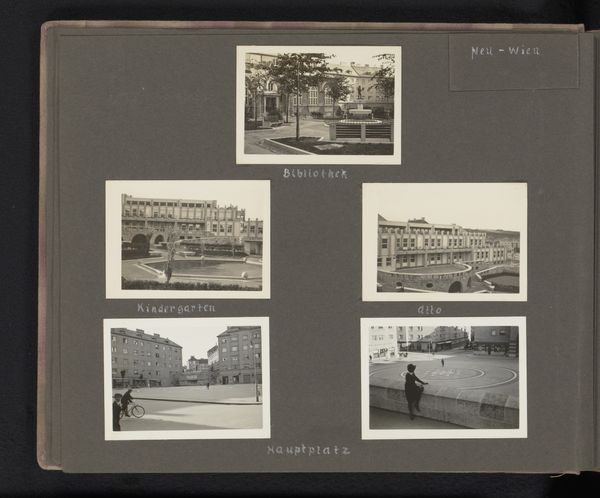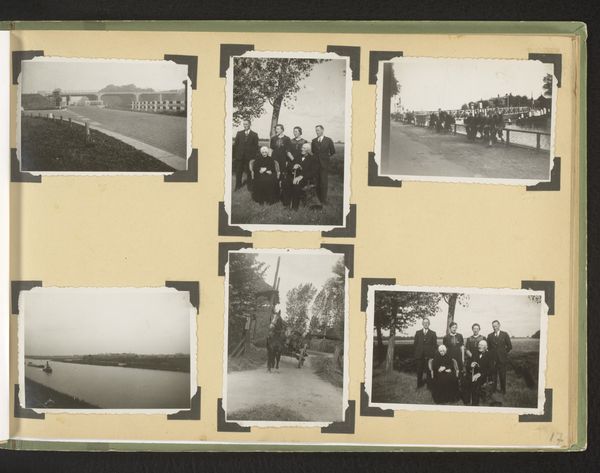
photography, gelatin-silver-print
#
photography
#
gelatin-silver-print
#
neutral brown palette
#
cityscape
#
paper medium
#
modernism
Dimensions: height 238 mm, width 290 mm
Copyright: Rijks Museum: Open Domain
Editor: This gelatin-silver print, titled "Praterstadion in Wenen" by Berti Hoppe, dates to 1930 or '31. The multiple images, displayed as in an album page, have a cool, documentary feel to them. How would you interpret this particular combination of images within the album page, and how does it relate to its time? Curator: It's fascinating to consider this album page as a statement about public space and the role of photography in shaping perceptions. The stadium itself becomes a symbol of modern civic life, captured and framed, if you will, by Hoppe's lens and displayed for posterity. The use of modernist aesthetics, particularly in composition and perspective, positions the work within broader artistic debates concerning the representation of urban landscapes. Consider how institutions, perhaps athletic or governmental, might have been involved in commissioning or using images like these to promote ideals of fitness, competition, and national pride during a tumultuous era. Editor: I see your point. The arrangement feels deliberate. Is she emphasizing accessibility, by documenting its relationship to water and surrounding landscape? The page offers a series of views; the whole is more than the parts, and suggests experiencing something sequentially, but each in isolation, like a memory. Curator: Precisely! What political messages might she be crafting for her viewers in capturing it empty of crowds? Or at capacity, overflowing with sports fans? Remember that Hoppe created this work shortly before the rise of Austrian Fascism and later Anschluss. What’s *not* explicitly shown becomes as significant as what is. This creates an open and multifaceted dialogue about place and experience and how these may shift across time and socio-political change. Editor: That is certainly thought-provoking. It highlights the critical role of historical and societal context when interpreting a piece. I'll definitely keep that in mind. Thanks!
Comments
No comments
Be the first to comment and join the conversation on the ultimate creative platform.
